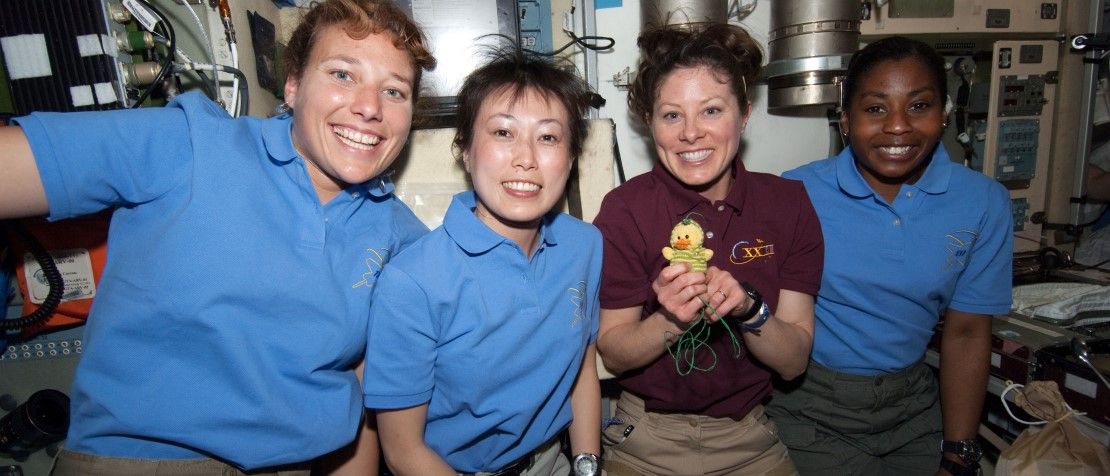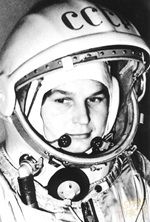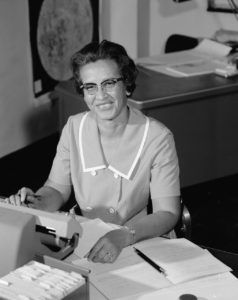
Meet the women who made history in space
“A bird cannot fly with one wing only. Human space flight cannot develop any further without the active participation of women.”

So said cosmonaut Valentina Tereshkova, (pictured left) who made history as the first woman in space aboard the then-Soviet Union’s Vostok 6 spacecraft in 1963.
In the nearly six decades since Tereshkova first ventured into space, 64 more women have followed suit, albeit in fits and starts.
It took another 20 years after Tereshkova’s flight before the former Soviet Union’s Svetlana Savitskaya became the second woman in space in 1982. Two years later, she earned the spot of being the first woman to walk in space.
To date, women make up just over 10 per cent of human space travellers.

‘Hidden Figure’ mathematician Katherine Johnson of the U.S. National Aeronautics and Space Administration (NASA) was instrumental in getting astronauts into orbit safely and helped put humans (all men, as it happens) on the Moon.
Computer scientist Margaret Hamilton’s software code was crucial to the safety of NASA’s lunar missions. Mary Jackson, the first African American female engineer, for whom NASA’s headquarters building was just renamed, performed years of research focusing on the behavior of the boundary layer of air around airplanes. Frances ‘Poppy’ Northcutt became the first female engineer to work at Mission Control during NASA’s Apollo 8 mission.
This trend continues today and into the further reaches of space.
Computer scientist Katie Bouman helped develop the algorithm that created the first-ever image of a black hole. Swati Mohan, the engineer leading NASA mission guidance and control operations, became the face of the successful Mars landing of the Perseverance rover in early 2021. Cathy Sham of NASA’s Johnson Space Flight Center, who also chairs a working party in the ITU Radiocommunication Sector (ITU-R), is the spectrum manager for the International Space Station as well as for NASA’s activities on the lunar surface. Similarly, the Hope probe launched by the United Arab Emirates to study the Martian atmosphere, was led by Sarah Al-Amiri and included several women engineers.
But breakthroughs in human space flight have not come without considerable costs.
Christa McAuliffe was scheduled to become the first teacher in space. But on January 28, 1986,she, along with NASA astronaut Judith Resnik, an electrical engineer, software engineer, biomedical engineer and pilot along with their five male crew members died aboard the Space Shuttle Challenger when the shuttle broke apart just 73 seconds after the launch of mission STS-51-L.
Kalpana Chawla, who became the first Indian-born woman in space in 1997, was killed when returning from her second mission, along with medical doctor, U.S. Navy captain, and space shuttle mission specialist Laurel Clark and the rest of the crew aboard the space shuttle Columbia in 2003.
After the disaster, Eileen Collins, the first female pilot of a space shuttle mission and first-ever female shuttle commander, led NASA’s poignant “Return to Flight” shuttle mission.

Astronauts Eileen M. Collins, mission commander; and Jeffrey S. Ashby, pilot, peruse checklists on Columbia’s middeck. Image credit: NASA
Other notable pioneers
In recent years, human space flight has become increasingly frequent and multinational, and the role of women space travellers from around the world have grown in parallel.
- The first American woman in space, Sally Ride, spent seven days aboard the space shuttle Challenger during its STS-7 mission in June 1983.
- Kathryn Sullivan, who travelled to space the following year, became the first American woman to complete a spacewalk
- Helen Sharman holds the distinction of being the first British astronaut in space. During her sojourn in 1991, Sharman also became the first woman to visit Russian space station Mir.
- Astronaut Mae Jemison became the first African American woman in space, serving as a mission specialist on the space shuttle Endeavour’s STS-47 mission in 1992.
- On another 1992 NASA-led mission, payload specialist Roberta Bondar became the first Canadian woman in space.
- In 1994, Japan’s Chiaki Mukai became the first Asian woman in space and the first Japanese national to complete two spaceflights.
- Claudie Haigneré (formerly Claudie André-Deshays) was the first French woman in space, conducting life sciences and technology experiments in 1996. Later, she became the first woman to qualify as a commander of a Russian Soyuz capsule during re-entry.
- The year 2000 saw astronaut Peggy Whitson become the first female International Space Station (ISS) Expedition Commander. Whitson and Yi So-yeon, the first South Korean in space, were part of a re-entry crew where the women outnumbered men for the first time ever.
- Whitson has a few more accolades under her belt, including the US record for cumulative time in space at a whopping 665 days. She also holds the record for the most spacewalk time by a female astronaut at 60 hours and 21 minutes over 10 spacewalks.
- In a 2001 mission, NASA astronaut Susan Helms became the first female crew member aboard the International Space Station (ISS). She also jointly holds the world record for the longest single spacewalk at 8 hours and 56 minutes.
- Anousheh Ansari became not only the first Iranian-born woman in space, but also the first self-funded woman to fly to the ISS in 2006.
- NASA’s Sunita Williams who first went to space in 2007 set the record at the time for the longest spaceflight by a woman and completed seven spacewalks.
- 2010 marked the first and only time to date that four women were in space at the same time: Tracy Caldwell Dyson, Dorothy Metcalf-Lindenburger, Stephanie Wilson and Japan’s Naoko Yamazaki.
- Liu Yang became the first Chinese woman in space aboard the Shenzhou-9 spacecraft in 2012 and docking with the Tiangong-1 space station.
- A year later, Wang Yaping became the second Chinese female space traveller, and taught schoolchildren live from the station.
- Samantha Cristoforetti, the first Italian woman in space in 2014, supported biology, human physiology, radiation research. She also oversaw the undocking of the last Automated Transfer Vehicle of the European Space Agency.
- In 2016, NASA astronaut Kate Rubins became the first person to sequence DNA in space aboard the ISS.
- In 2019, NASA astronauts Jessica Meir and Christina Koch completed the first all-woman spacewalk to replace the space station’s batteries – a feat delayed due to spacesuit sizes. The duo did two more spacewalks in 2020. At 328 consecutive days, Koch holds the record for the longest duration in space for a woman during a single mission.
- India’s second Moon lander mission in 2019 was led (remotely) by Muthayya Vanitha and Ritu Karidhal, making it the Indian space agency’s first-ever space mission to be headed by women.
Bringing more women into space
The near future looks bright for aspiring women space travellers of the world.
Anna Kikina from Russia is scheduled to go into orbit in 2022. NASA has said it wants to land the first woman on the surface of the Earth’s Moon in 2024. Last week, the United Arab Emirates announced that Nora Al Matrooshi would become the Arab world’s first woman astronaut.
Two women are among the four passengers chosen to fly on aerospace manufacturer and space transportation company SpaceX’s first-ever all-civilian space mission, Inspiration4.
Hayley Arceneaux, 29, would be the youngest American to fly into space and the first with a prosthetic body part.
“This mission is going to inspire people in so many ways,” said Arceneaux, who is also a bone cancer survivor.
“Until this mission, I could have never been an astronaut. This mission is opening space travel to people who are not physically perfect.”
Header image: Four women on the International Space Station pose for a photo in the Zvezda Service Module while space shuttle Discovery remains docked with the station. From the left are NASA astronaut Dorothy Metcalf-Lindenburger and Japan Aerospace Exploration Agency (JAXA) astronaut Naoko Yamazaki, both STS-131 mission specialists; along with NASA astronauts Tracy Caldwell Dyson, Expedition 23 flight engineer; and Stephanie Wilson, STS-131 mission specialist. Image credit: NASA
